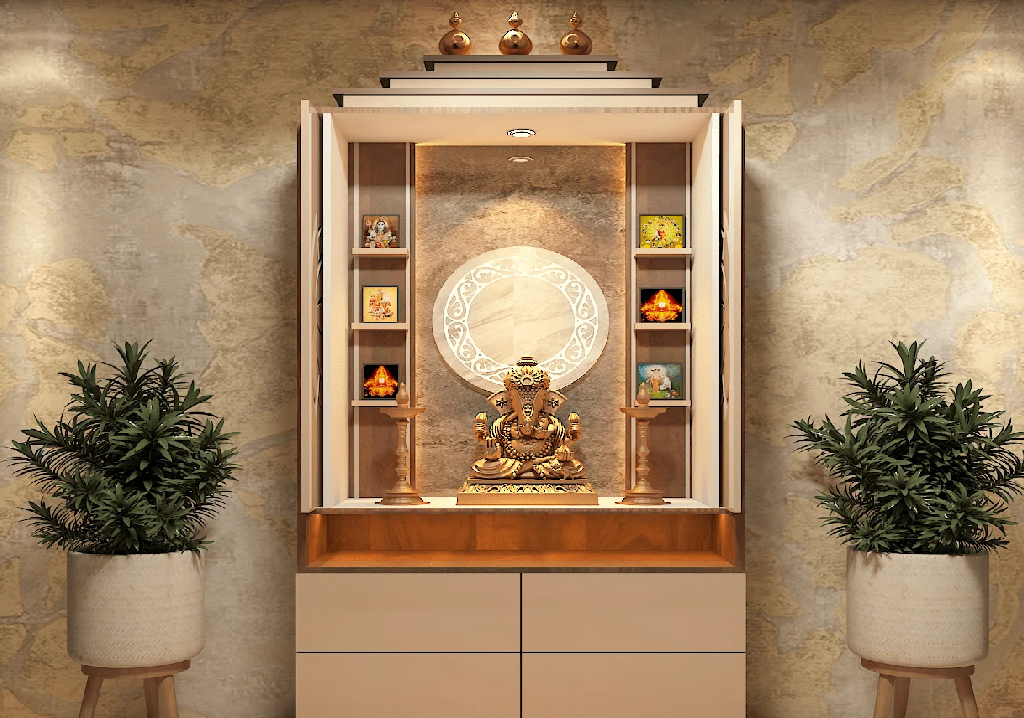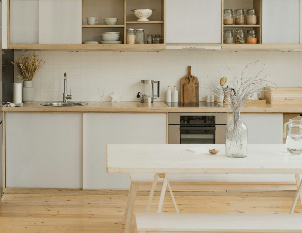Creating a serene and sacred space for worship in your home is a wonderful way to connect with your spirituality and enhance the ambiance of your living environment. A well-designed Pooja room not only serves its purpose but also adds aesthetic value to your interiors. Here are some inspiring design ideas and tips to create the perfect Pooja room.

The first step in designing a Pooja room is selecting an appropriate location. Ideally, it should be in a quiet area of your home, away from noise and distractions. Many people prefer placing their Pooja room in the northeast corner, as it is considered auspicious according to Vastu Shastra.
a. Size Matters
The size of your Pooja room can vary depending on the space
available. Whether you have a dedicated room or a small nook,
it’s essential to ensure it feels spacious and inviting. For
smaller spaces, consider wall-mounted cabinets or a corner
shelf to maximize space without sacrificing functionality.
b. Multi-functional Spaces
If space is limited, consider integrating the Pooja area with
another room, such as a living room or study. Using elegant
partitions or decorative screens can create a distinct
atmosphere while maintaining a cohesive look.
The color palette of your Pooja room plays a significant role in setting the mood. Soft, calming colors like white, beige, or pastel shades are ideal for creating a peaceful environment. You can also incorporate vibrant colors like red or gold for accents, symbolizing energy and positivity.
Bringing nature indoors can enhance the spiritual experience. Consider adding plants, such as money plants or peace lilies, which are not only beautiful but also purify the air. Natural materials like wood and stone can add warmth and a touch of earthiness to the design.
a. The Mandir
The centerpiece of any Pooja room is the Mandir (altar).
Whether you opt for a traditional wooden Mandir or a modern
design, it should reflect your personal style. Ensure it has
ample space for your deities, along with decorative elements
like bells and lamps.
b. Seating Arrangements
Include comfortable seating, such as a small bench or floor
cushions, for meditation and prayer. This space should invite
you to sit quietly and connect with your spiritual side.
Proper lighting is crucial for creating a serene atmosphere. Soft, warm lighting works best, and you can achieve this through recessed lighting, decorative lamps, or candles. Consider using dimmers to adjust the brightness according to your mood.
Make your Pooja room uniquely yours by adding personal touches. Display photographs of family deities, use hand-painted murals, or incorporate artifacts from your travels. These elements can make your space feel even more special and connected to your spiritual journey.
A Pooja room should always be clean and clutter-free. Regularly organize your offerings, and consider using decorative storage boxes to keep items tidy. A clean space not only looks good but also enhances the spiritual experience.
Designing a Pooja room is about creating a space that resonates with your spiritual beliefs while complementing your home’s overall aesthetic. With thoughtful planning and creativity, you can transform a simple corner into a tranquil sanctuary for prayer and reflection. Remember, this space is a personal retreat—let your heart guide you in its design!
